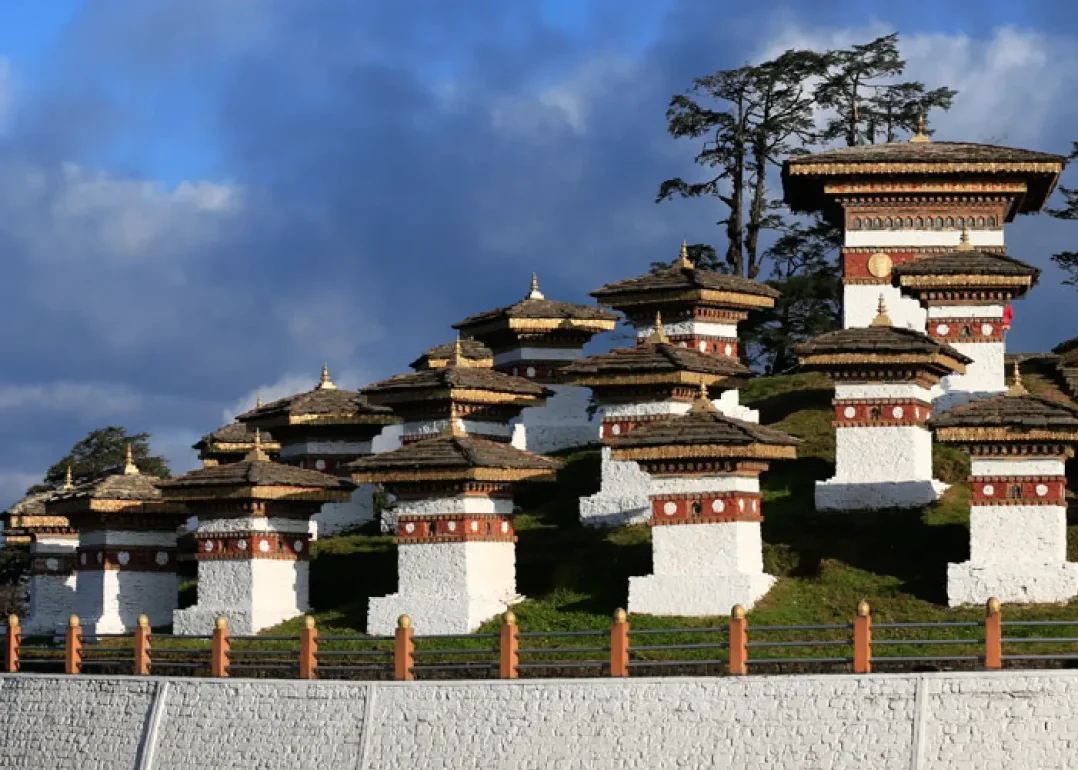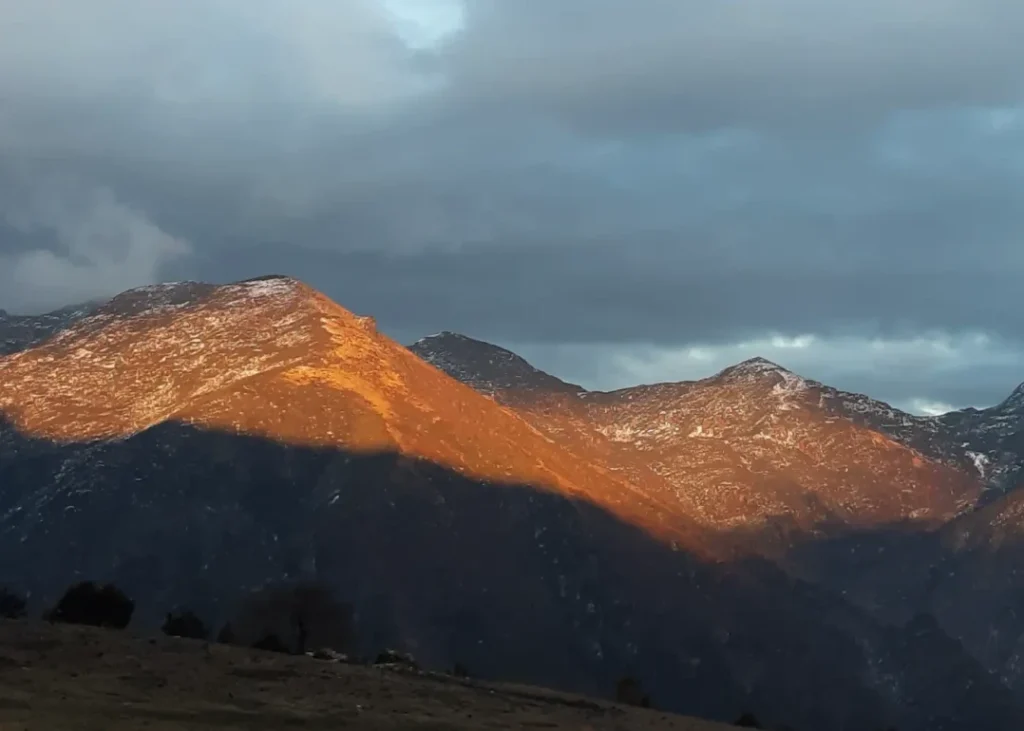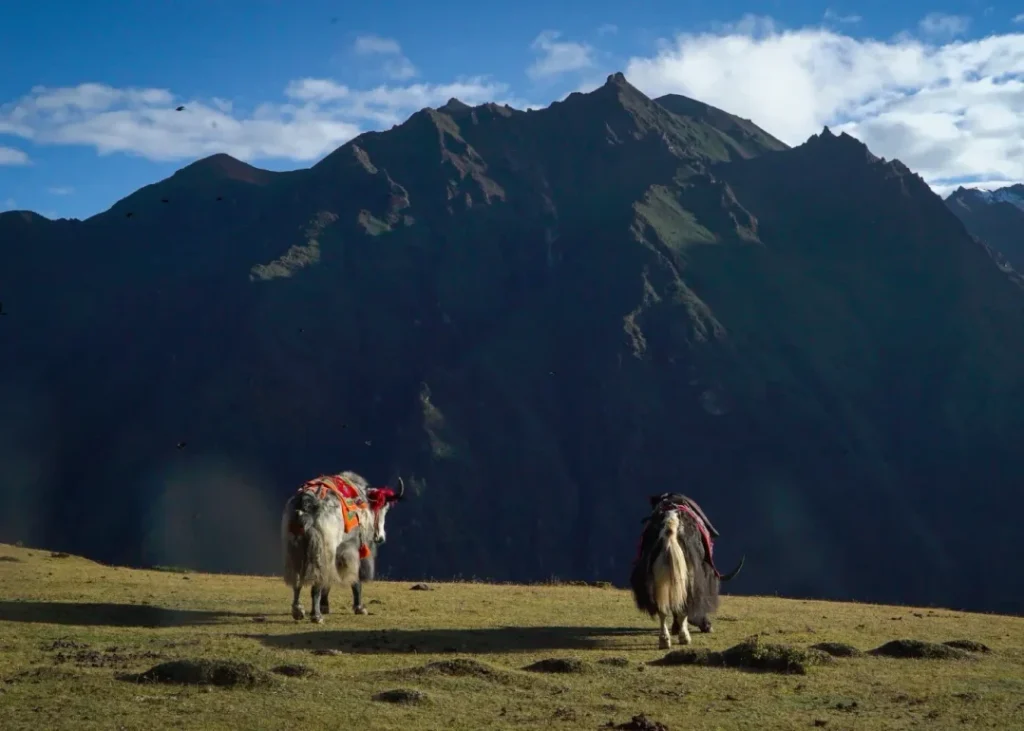About Bhutan
Bhutan is a small, landlocked nation located in the eastern Himalayas between India and China. Its landscape ranges from subtropical plains and forests in the South to subalpine forests and snowy mountains in the North. Bhutan is a predominantly Buddhist country and is known as the last stronghold of Mahayana Buddhism.
There are 19 languages spoken in Bhutan, but the national language is Dzongkha. English is used throughout Bhutan’s education system, so it is widely used and understood.
Bhutan is a year-round destination. There are four seasons: summer (June to August), autumn (September to November), winter (December to February) and spring (March to May). But because of the range of altitudes in the country, and the influence of the north Indian monsoons, the climate is incredibly varied.
In the south, the humid, subtropical climate is fairly consistent year-round, with temperatures between 15oC and 30oC. Central Bhutan, with its temperate forests, has a more seasonal climate, with warm summers and cool, dry winters. The northern regions are much colder during winter. Because of the high altitude, mountain peaks are snowy year-round and the lower reaches remain cool in summer.
In summer, the Indian monsoon season runs from late June or July to late September, mostly affecting the southern regions. Most farming activities take place in the summer, when crops thrive in verdant landscapes.
Autumn, from late September or early October to late November, follows the rainy season. It is characterised by bright, sunny days and some early snowfall at higher elevations. It’s the season of feasts and festivals as farmers reap the fruits of their work.
From late November until March, the crisp, clear and sunny winter sets in, with frost throughout much of the country and snowfall common above elevations of 3,000 metres. The winter northeast monsoon brings gale-force winds at the highest altitudes through high mountain passes, giving Bhutan the name Drukyul, which means Land of the Thunder Dragon in Dzongkha (Bhutan’s national language).
Bhutan’s generally dry spring starts in early March and lasts until mid-April. It is a botanist’s delight, with nature in full bloom. Summer weather commences in mid-April with occasional showers and continues to late June.
Bhutan’s currency is called ngultrum. It’s 1:1 with Indian rupees. However, USD and Indian Ruppes are accepted in shops and hotels.
Three different electrical plugs are used throughout Bhutan: the British plug (three square pins, compatible with type G sockets), the European plug (two round pins, compatible with type C socket) and the Indian plug (three thick round pins, compatible with type D sockets). It’s a good idea to bring adaptors for all three.
For telephone calls, Bhutan’s country code is +975. Make sure you add this to the beginning of any number if calling Bhutan from abroad.


Planning Your Trip
Visitors of all nationalities, except those from India, require a visa before entering Bhutan. For all visitors, except those from Bangladesh and the Maldives, this visa must be applied for and approved in advance of travel. Visitors from Bangladesh and the Maldives also require a visa, but this can be applied for and approved either in advance of travel or upon arrival in Bhutan.
Visitors from India are able to apply for a permit but are required to hold an Indian passport or an Indian voter ID card. For Indian nationals under the age of 18, a passport or a birth certificate can be used to enter and they must be accompanied by a legal guardian.
Nationals from Switzerland and Thailand holding diplomatic or government-official passports are eligible for a visa at their port of entry.
Trails of Bhutan will arrange the Visa on your behalf or you can apply online for a visa here. For more informations do contact our team.
Visitors from Bangladesh and the Maldives requiring a visa can apply either online before travelling or in person upon arrival in Bhutan.
No, there are no restricted nationalities in Bhutan.
Before travelling, visitors from India, Bangladesh and the Maldives can apply for a permit (Indian nationals) or visa (Bangladeshi or Maldivian nationals). You may also apply at the point of entry, but please be aware that there may be a long wait depending on the number of applicants at the time. We recommend arranging your permit/visa beforehand.
A correctly input visa application can take up to five days to process.
There is a one-off fee of US$40 for the processing of your application. This is payable at the same time as your Sustainable Development Fee (SDF), as part of the process of submitting your visa application.
Yes, provided the extension is applied for before the original visa or permit expires.
Visitors can extend their stay via the online visa application portal, using the same log-in details that were used to process their original visa.
The fees for processing your extension application, and daily SDF for the duration of your extended stay, will be payable via the same portal.
Yes, it is possible to use your credit card to pay for your visa and SDF online. However, we strongly recommend that you notify your bank prior to making the credit card transaction to ensure that the payment is processed successfully. If they are not informed in advance, sometimes international banks will block online payments to Bhutan as part of the bank’s online security measures.
No. The requirement for mandatory travel insurance was lifted on April 23, 2024. However, it is strongly recommended that all guests to Bhutan have travel insurance before visiting the Kingdom as a precaution in case of unforeseen situations.

There is a charge of Nu. 4,500 per car, per day. A guide is also mandatory and will be at an additional charge.
If guests want to bring their own car, the cars must meet the requirements of Bhutan’s Roads Safety and Transport Authority, and must also have a valid driver’s license, insurance documentation, pollution control documentation, an entry permit, and a vehicle in reasonable condition. A valid Indian driver’s license is accepted for self-driving within Bhutan. The same fees and rules apply for motorbikes.
In case the vehicle is not owned by the guests travelling to Bhutan, an authorisation letter is required.
The country has one international airport located in Paro. Flights operated by Drukair and Bhutan Airlines arrive and depart from destinations including Bangkok, Delhi, Kolkata, Bagdogra, Bodhgaya, Dhaka, Kathmandu, Guwahati and Singapore. Private jets or charters can fly into Bhutan after obtaining the relevant approvals.
There are also domestic airports in Yonphula in eastern Bhutan, Bumthang in central Bhutan, and Gelephu in south-central Bhutan.
Trails of Bhutan will arrange the transportation according to the size of the group. It is not possible to hire a self-drive vehicle in Bhutan.
Domestic flights are often the fastest way to travel longer distances within Bhutan. Domestic airports operate flights to and from Yonphula in eastern Bhutan, Bumthang in central Bhutan, and Gelephu in south-central Bhutan.
For special itineraries, helicopter services can be arranged. For more information about helicopter services, visit the Royal Bhutan Helicopter Services page or contact your travel partner.
A local guide will help you see the best that the country has to offer and will ensure your safety when exploring unfamiliar terrain and altitude. It is mandatory to be accompanied by a guide for any journey or any trek beyond Thimphu and Paro. Guides are also mandatory for visitors who enter Bhutan via our land borders and plan to travel beyond the border towns.
Guests no longer require a Route permit to travel around the country, so long as they are accompanied by a guide certified by the Department of Tourism. Please contact our hosts for the Department of Tourism’s list of approved tourism services.
While guides aren’t necessary for all experiences, such as dining out and shopping, we strongly recommend that guides accompany visitors for experiences such as visiting temples and local places of interest. It is mandatory to have a guide when visiting monuments such as dzongs, for instance.
If you are following an itinerary or taking part in a trip organised by your hotel, you will not need to book a guide as one will be arranged by the hotel.
Bhutan offers a wide range of accommodation, from luxurious five-star hotels to cosy homestays in traditional village settings.
You may only stay in accommodation or campsites approved by the Tourism Council of Bhutan.
Bhutan is a very safe place to visit, even if you’re travelling alone. There is very little crime experienced by locals or visitors, although we advise you to take care of yourself and your belongings. In some areas you may encounter stray dogs – please be cautious around them as they are not domesticated. They normally keep their distance, but please stay away from them as much as possible, especially if travelling with children. Please don’t feed or pat these or any other wild animals.
Bhutan’s physical environment presents occasional safety hazards, including flooding and landslides. From June to September the monsoons can affect transport and services. Check with your hotel or tour operator for possible disruptions.

During Your Trip
Yes – Bhutan’s Department of Tourism has a dedicated visitor centre at Paro International Airport. Others may be found at the four border entry points.
You can change your local currency for ngultrum upon arrival at Paro International Airport or at banks, larger hotels and authorised currency exchange businesses in Thimphu.
You may bring cash equivalent to US$10,000 into the country.
ATM and banks accept Visa and Mastercard. International credit cards are widely used in urban areas of Bhutan. However this service may not be available in other parts of the country. Visitors can download the digital wallet app goBoB launched by the Bank of Bhutan, which can be used with a local SIM card and is widely accepted throughout the country. Another option is the MyPay digtal wallet app launched by Bhutan National Bank. Both apps can be connected to international credit cards and used widely.
Cash in US dollars and Indian rupees is also widely accepted. We advise bringing some cash in either of these currencies, or in Bhutanese ngultrum.
Most hotels have Wi-Fi in Bhutan, but we recommend obtaining a guest SIM card for more convenient access to data and a more reliable internet connection. Mobile data in Bhutan can also be expensive. You can find the B Mobile SIM in mobile stores in larger cities, which you can easily top up using the Bank of Bhutan app goBoB. This app also facilitates other payments within the country.
SIM cards can be purchased from the Paro International Airport’s visitor information centre on arrival, or from branch offices of Bhutan Telecom and TashiCell, or from authorised agents in towns.
There are no rules about what visitors should wear. However if you are planning to visit places of religious significance, respectful smart-casual clothing that covers your body from shoulders to knees is appropriate and appreciated.
Yes, a guide is required to enter monuments and Dzongs in Bhutan. While some of the monuments and Dzongs have no entry fee, others have a fee on arrival, which can be paid in cash or via the GoBob app.
There are plenty of places to shop for special objects, from high-end pieces to small mementos. Many visitors enjoy shopping at the Cottage and Small Industries (CSI) Market and the Centenary Farmers’ Market. The Textile Museum shop has a wonderful selection of artisan-made textiles and homewares, as do the nearby Tarayana and Craft galleries. Our OGOP shops are also excellent places to find food, drink and handcrafted products sourced directly from the country’s artisans and farmers.
Keeping important antiques and artefacts in Bhutan is a key part of how we preserve our heritage for future generations. We have a law that sets out which artistic, historic, cultural, religious, social, archaeological and technical objects you may not take with you when you leave. To ensure any items you acquire comply with the law, you will need an Export Permit for Non-Antique Artefacts.
A permit, which must be applied for in advance, is required to fly a drone either recreationally or commercially in Bhutan. Please email media@tcb.gov.bt to find out more about the regulations.
Yes. A guide is required at all times for all guests who drive their own cars to Bhutan. It is highly recommended to pre-book guides before arriving at the borders. If you need help with arranging a guide, please contact our host services team here.
Yes, permits are required to enter National Parks in Bhutan. However the process can be done online and the permit should be issued quickly. Please contact us for more information
While most monuments in Bhutan are free, some are chargeable. Children below 18 years will have a 50% concession and children aged five years and below will be exempted. Most monuments are open from 9am – 5pm each day. In June 2023 it was announced that foreign visitors can now visit monuments whenever they are open to the general public, without any restrictions.
Plan Your Trip
Craving a holiday in utter luxury? Our team of travel specialists are waiting to help you plan your tailor-made trip, so get in touch with us today